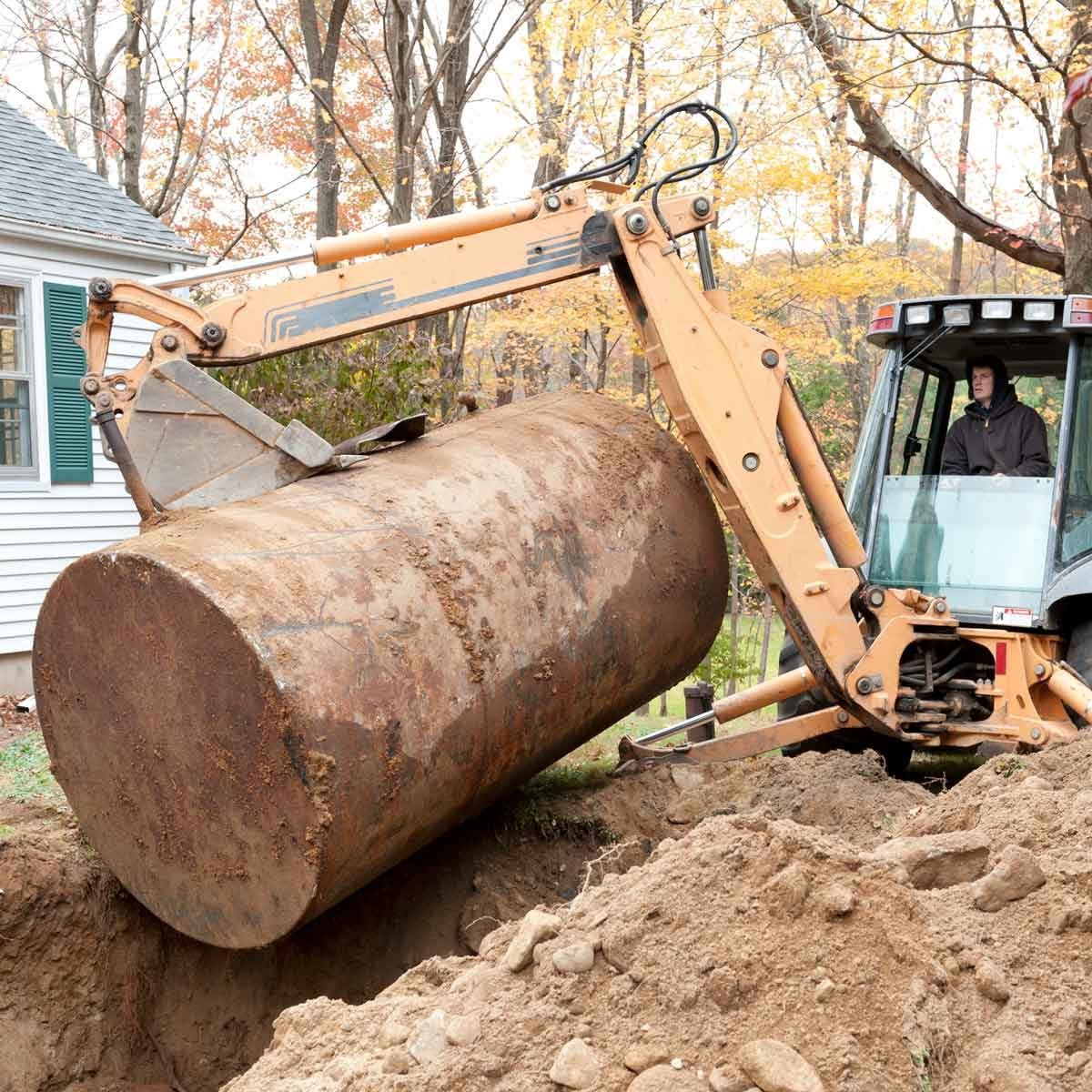Underground oil tanks are hidden hazards that could end up costing a homeowner big-time. The more you know up front, the better.

What You Need to Know About Underground Oil Tanks

Purchasing a home with an underground oil tank is one of riskiest moves a home buyer can make. That’s because complete decommissioning and remediation if the tank were to leak, or if oil contamination is found in the soil, can be extremely expensive. We’re talking upwards of $100,000 if a tank ruptures, which your homeowners insurance may not cover.
The good news is, properties with underground oil tanks are becoming rarer, because more homeowners are removing them or filling them in. But if a property you’re looking at still has one, here are some things you should know.
On This Page
About Underground Oil Tanks
Before municipalities installed natural gas lines, the furnaces in most homes used fuel oil stored in a tank. Underground oil tanks were common from the 1930s to the 1980s. Due to their size and unsightliness, as well as the risk of vandalism and theft, tanks were often buried, explains real estate attorney and investor Rajeh Saadeh.
“Over time, and due to a variety of factors like corrosion or damage, tanks can wear out to the point where the walls are compromised and permit oil therein to contaminate soil and groundwater,” Saadeh says. “This causes a negative impact on the environment, including the health and safety of people.” Here’s everything you need to know about soil contamination in your yard.
How to Know if Your Home Has an Underground Oil Tank
If there is a tank underground, it typically won’t be more than 10 feet from the home’s foundation. The most obvious indicator are pipes protruding from the ground, says Saadeh. “Underground oil tanks have two pipes: a fill pipe that is used to fill the tank with oil, and a vent pipe,” Saadeh says.
Sometimes, though, the fill and vent pipe have been removed but the tank remains. In that case, Saadeh suggests running a test called a tank sweep. “A tank removal company performs the test by running a metal detector with ground penetrating radar, which identifies the presence of an oil tank,” he says. A tank sweep costs about $250. (Note: A recreational metal detector won’t cut it for this. Hire a pro.)
Another indication of an underground oil tank: Copper pipes in the basement that have been capped off. If they run outside the home and underground but aren’t plumbing pipes, they could lead to an underground oil tank.
Do I Need to Have the Oil Tank Removed?
It depends. Some states require the removal of the tank if it is no longer in use, regardless of whether it is leaking. Other states have no regulations, but many would still advise removal for these reasons:
- Risk of leakage: Any home with oil-fueled heat is at risk for a ruptured oil tank. However, underground oil tanks have a higher chance of causing massive contamination than above-ground storage tanks, says Deborah Goldberg, an insurance expert with Expert Insurance Reviews. “Leaks can contaminate the soil around your house and even your drinking water,” she says.
- Resale hardships: Many Realtors will advise clients to remove an underground oil tank before listing, because most buyers won’t take on the risk. Even if someone is willing to purchase the property, there could be problems because many banks will not offer mortgages for properties with an underground oil tank.
- Homeowners insurance may not cover it: Goldberg says homeowners insurance rarely covers the costs associated with a leaking underground oil tank. Some policies may even have a disclaimer for underground oil tanks. If you decide to leave an oil tank underground, there are separate tank insurance policies that provide coverage in case of a leak.
- Damaging to the environment: A slow leak from an underground oil tank can spread from the soil into ground water and then into surface water, impacting not just your home but those around you. The ground water may become unusable for irrigation, which can hurt nearby farmers. A leak that contaminates surface water can impact public health and wildlife.
Oil Tank Removal Process
State laws regarding oil tank removal vary greatly. For example, Michigan requires all underground oil tanks be properly closed and removed within one year of its last use. New York is also a proponent of underground tank removal.
Removing an oil tank is usually performed by a professional tank removal service because their trained technicians have the necessary knowledge and equipment. In addition, removing an underground oil tank usually requires special permits.
Before an underground oil tank can be removed, it must be emptied of any remaining oil and thoroughly cleaned. Once it is ready to be removed, it will be dug from the ground and removed from the property on a trailer. From there, the tank is properly disposed of and reused or recycled, if possible. Cost of removal depends on the size and location of the tank, but typically ranges from $1,000 to $2,500.




















